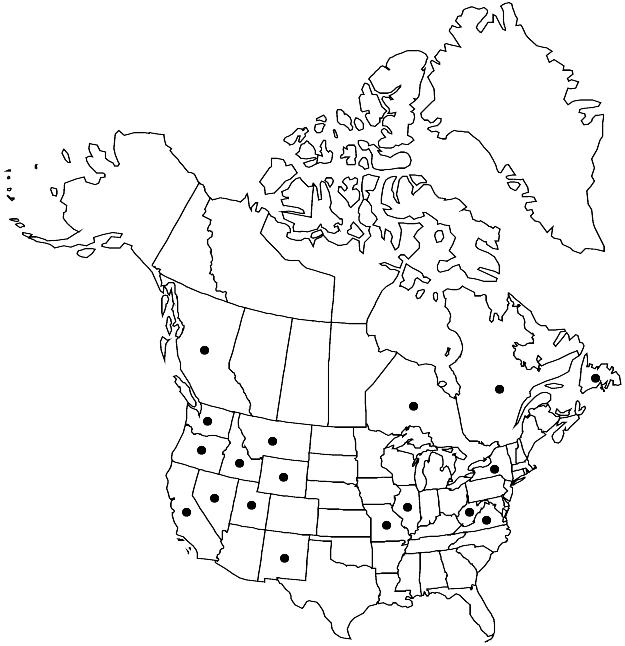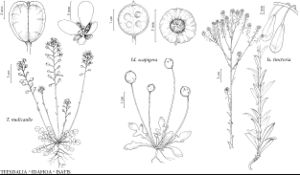Isatis tinctoria
Sp. Pl. 2: 670. 1753.
Plants glaucous, usually glabrous, sometimes pubescent proximally. Stems (3–)4–10(–15) dm. Basal leaves: petiole 0.5–5.5 cm; blade oblong or oblanceolate, (2.5–)5–15(–20) cm × (5–)15–35(–50) mm, base attenuate, margins entire, repand, or dentate, apex obtuse. Cauline leaves: blade usually oblong or lanceolate, rarely linear-oblong, base sagittate or auriculate, apex acute. Fruiting pedicels 5–10 mm. Flowers: sepals 1.5–2.8 × 1–1.5 mm, glabrous; petals 2.5–4 × 0.9–1.5 mm, base attenuate; filaments 1–2.5 mm; anthers 0.5–0.7 mm. Fruits black or dark brown, often broader distal to middle, (0.9–)1.1–2(–2.7) cm × 3–6(–10) mm, base cuneate, margins sometimes slightly constricted, apex usually subacute or rounded, rarely subemarginate; locule with distinct midvein, lateral veins inconspicuous, 3–6(–10) mm; apical wing 3.5–5(–7) mm wide. Seeds light brown, 2.3–3.5(–4.5) × 0.8–1 mm. 2n = 14, 28.
Phenology: Flowering Apr–Jun.
Habitat: Roadsides, fields, pastures, sagebrush hillsides, prairies, railroad embankments, waste places
Elevation: 300-2200 m
Distribution

Introduced; B.C., Nfld. and Labr. (Nfld.), Ont., Que., Calif., Idaho, Ill., Mo., Mont., Nev., N.Mex., N.Y., Oreg., Utah, Va., Wash., W.Va., Wyo., Europe, c, sw Asia, n Africa, introduced also in South America (Chile, Peru).
Discussion
Isatis tinctoria has been cultivated since ancient times as a source of a blue dye (woad) obtained by fermenting the ground leaves and proximal portions of the plant.
Selected References
None.
